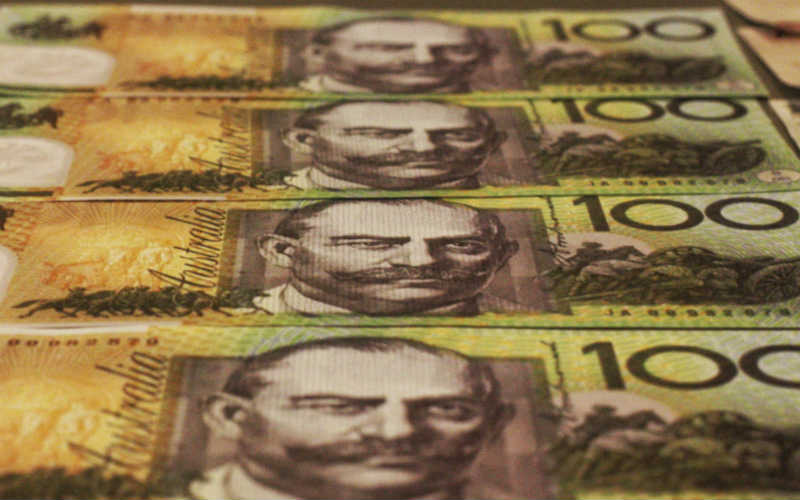Greg Boland, Chief Strategy Officer at Tiger Brokers, says the evidence of the past suggests equity markets tend to get a major boost in the first year under a new US president.
"The first year after any election, particularly the last three elections, the market has performed pretty well," he told the Savings Tip Jar podcast.
"After Obama's second term at the start, the market was up around 30-odd per cent and under Trump and Biden both in their first year, the markets were up around 23-24%.
"Economists or analysts globally are saying 10 to 15%...I'm sort of at the top end, maybe 15 to 20%, but given history there's no reason why the market couldn't rally by as much as 25% to 30%."
President Trump's campaign tough talk on tariffs made plenty of investors nervous, but Mr Boland says he was surprised by Trump's inauguration address on Monday.
"He did mention tariffs and taxes briefly, but it seemed to be a step back from his aggressive rhetoric in the past," he told the podcast.
For investors in Australia, this might be another sign that points to equity markets as the asset class to get into this year, after shares outperformed property last year for the fifth time since 2014.
Read more: Shares or Property?
The new president bump: Fact or fallacy?
The numbers back up Mr Boland's assertion that in the US at least, incoming presidents tend to give equity markets a boost.
Over the first year of the past four administrations, the S&P 500 (the index tracking the stock performance of the 500 largest listed companies in the US) has gained at least 17.8%.
That's significantly higher than the average growth rate since 2000, about 5.9%* per year.
However, the other factors that impact markets shouldn't be ignored - in 2009 for example the 30%-plus growth was partly the market recovering from the 2008 crash, so Obama can't take all the credit.
Still, the data is certainly encouraging for investors in the US, and given how easy it has become to buy US shares from Australia, there will also be plenty of Aussies looking to buy a piece of the American market.
| Incoming US President | S&P 500 on inauguration day | S&P 500 end of year | Growth through the year |
|---|---|---|---|
| Joe Biden (2021) | 3,816.22 | 4,765.75 | 24.9% |
| Donald Trump (2017) | 2,269.96 | 2,673.61 | 17.8% |
| Barack Obama (2013) | 1,485.98 | 1,848.36 | 24.4% |
| Barack Obama (2009) | 849.64 | 1,115.1 | 31.2% |
Unsurprisingly, Australian markets don't tend to experience quite the same boost after an election on the other side of the world.
Nevertheless, the ASX 200 still outperformed its average growth rate in the 21st century (about 4.1%*) each year a new US president has taken office since 2009.
| Incoming US President | ASX 200 on inauguration day | ASX 200 at year end | Growth rate |
|---|---|---|---|
| Joe Biden (2021) | 6,742.6 | 7,444.6 | 10.4% |
| Donald Trump (2017) | 5,692.2 | 6,065.1 | 6.6% |
| Barack Obama (2013) | 4,771.2 | 5,352.2 | 12.2% |
| Barack Obama (2009) | 3,563.5 | 4,870.6 | 36.7% |
*Average growth rate calculated using compound growth formula to compare index at the end of 2024 with the start of 2000.
Market headwinds
At the same time, investors shouldn't be under the impression it's a sure thing markets will pick up this year.
Trump could still introduce the major tariffs he was promising during the campaign, which could be a significant drag for Australian markets.
While Australian exporters may be spared directly, China appears the likeliest target, and a slowdown over there could hurt the ASX given China is Australia's largest trade partner.
In 2023, Australia sold about $219 billion worth of goods to China according to government figures - equivalent to about 8% of Australia's GDP that year.
On top of this, while inflation has come down around the world, it remains above target levels both in Australia and elsewhere.
The RBA maintains that the cash rate will only start to come down if governor Michele Bullock and the board are confident that inflation has been tamed.
If rates stay higher for longer than anticipated, this could be another potential drag on growth prospects.
Picture by Tim Gouw on Unsplash

Ready, Set, Buy!
Learn everything you need to know about buying property – from choosing the right property and home loan, to the purchasing process, tips to save money and more!
With bonus Q&A sheet and Crossword!



 Emma Duffy
Emma Duffy
 Alex Brewster
Alex Brewster













